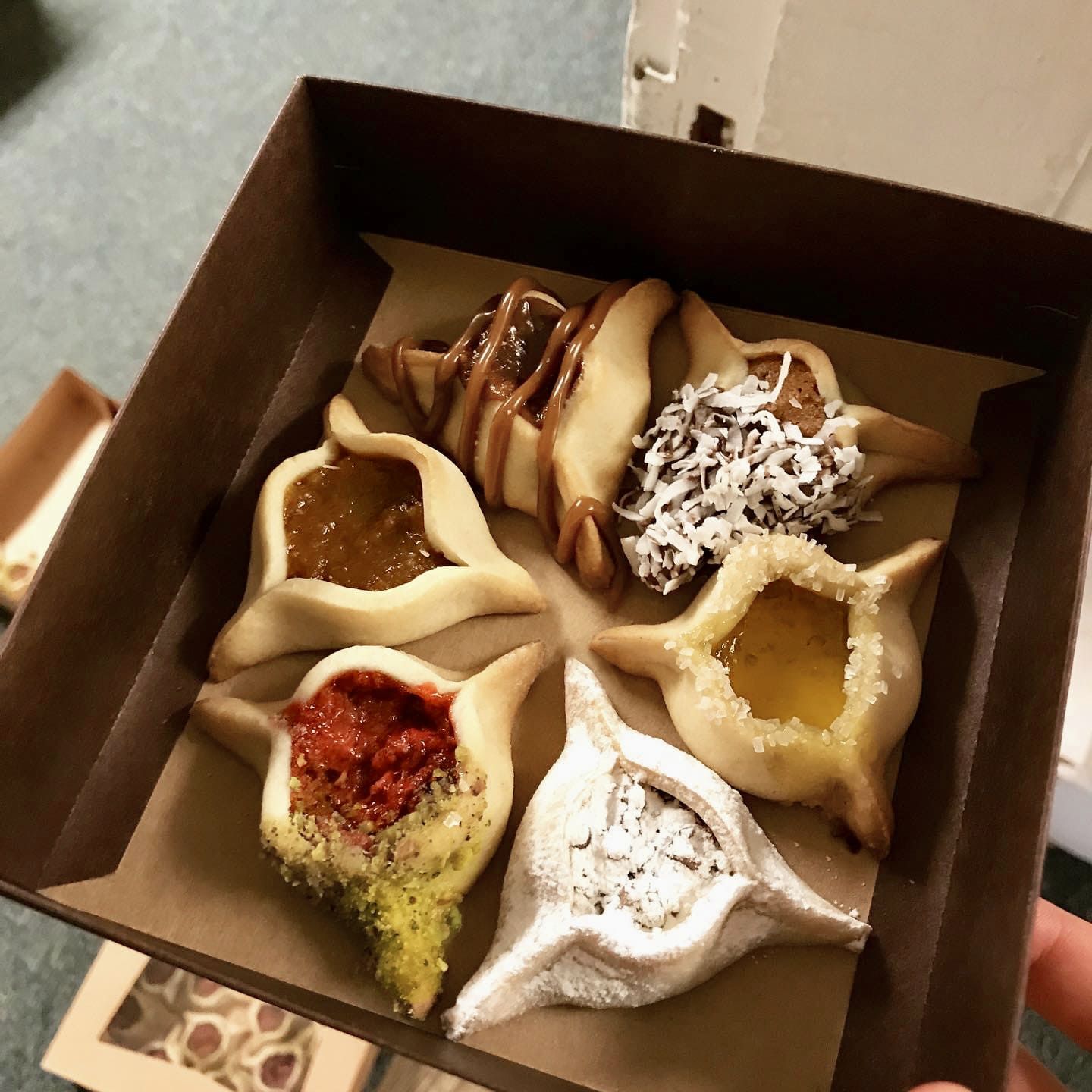Celebrate Purim 2025: A Time for Joy, Tradition, and Community
Beatriz•Jan 26, 2025
Purim is one of the most eagerly anticipated events of the Jewish year. It’s a festive holiday that celebrates the victory of the Jewish people over their enemies, as told in the Book of Esther.
As we come together this 2025, Purim is a chance to celebrate with costumes, performances, delicious food, and a sense of community spirit. Join in the fun and excitement of Purim, where revelry and meaningful rituals, make everyone, young and old, smile.

Purim Stock photos by Vecteezy
The History of Purim in a Nutshell
The story of Purim comes from the Book of Esther, set in ancient Persia. It takes place in the Persian Empire during the reign of King Ahasuerus, around 480-470 BCE in the royal capital of Shushan (Susa).
King Ahasuerus, after dismissing Queen Vashti from her position, chooses Esther, a Jewish woman, as his new queen. But Esther keeps her Jewish identity a secret, according to Mordechai’s advice. Haman, the king’s right-hand man, becomes furious when Mordechai, Esther’s cousin, refuses to bow to him. In revenge, he manipulates the king into approving a decree to annihilate all Jews in the Persian Empire. Using Purim (lots), Haman chooses the date for this massacre.

At two banquets she organizes, Esther reveals to King Haman’s plot and her Jewish identity. The king, enraged, orders that Haman be hanged on the gallows he prepared for Mordechai.
The Jews are allowed to defend and even achieve victory against their attackers. The day of their survival is made into a feast and celebration known as the feast of Purim. The holiday reflects courage and survival in to fight against hatred. Over time, Haman symbolically represents anti-Semitic attitudes, meaning that Purim is a celebration of resilience against potential hate.
The Meaning of Purim
Purim is a Jewish holiday that celebrates the survival of the Jewish people during the reign of King Ahasuerus in ancient Persia. The story and celebration can be understood in different ways:
- Divine Providence: Incidentally, there is no God mentioned in the book of Esther, yet the ending of the story implies a divine intervention.
- Human Agency: The story tells us the importance of human actions, courage, and wisdom in solving a problem.
- Reversal of Fortune: The story shows how situations can change from hopeless to successful, depicted by the decline of Haman and the rise of the Jews.
- Identity and Survival: Purim tells the struggle to maintain Jewish identity and survival in the face of Antisemitism, a narrative that repeats in Jewish history.
- Joy and Gratitude: It is a holiday that celebrates joy and gratitude after being through some difficult times
- Unity and Community: Cultivating friendships and offering charity to the poor creates unity and people share responsibilities.
- Chance and Fate: The casting of lots (“pur”) refers to randomness in life, where chance and decisions can mix together.

When is Purim 2025?
Purim holiday in 2025 starts at sundown on Thursday, March 13, and ends at nightfall on Friday, March 14. It falls on the 14th day of Adar in the Hebrew calendar, and the date changes every year in the Gregorian calendar, often between late February and March.
In cities that were walled in the time of Joshua, Purim is celebrated a day later, called Shushan Purim. The holiday commemorates the survival of the Jews from Haman’s plot in the Book of Esther.
Must-Know Purim Traditions and Customs
Here are several traditions of Purim that make its story and meaning more vivid:
- Reading the Megillah: The Book of Esther, called Megillah, tells the story of Esther and how the Jewish people were saved from Haman’s plan. It is read two times, one in the night and in the daytime of the following day. Whenever Haman’s name is mentioned people make loud noises to ignore Haman’s name as a way of rejecting him.

- Mishloach Manot: This tradition entails offering food gifts to friends and neighbors. Every gift should contain at least two ready-to-eat foods or drinks. The purpose is to strengthen community relations and guarantee everyone has enough food to celebrate.
- Hamentaschen: These triangular pastries are filled with either poppy seeds, jam, or chocolate. They represent Haman’s defeat and are in the form of his hat, ears, or pockets, depending on interpretations.

Notyourbubbes, CC BY-SA 4.0, via Wikimedia Commons
- Costumes and Purim spiel: People wear costumes derived from the actual story of Purim. This acknowledges the hidden identities in the story, like Esther’s secret as a Jew. Skits and plays, known as Purimspiels, are fun and retell the story in creative ways.
- Matanot La’evyonim: Giving to the poor is an important part of Purim. It guarantees all, including those in need, can participate in the celebrations. People contribute cash or resources to at least two persons or organizations.
These traditions support the community; recall the essence of the holiday; and make Purim a time of generosity and celebration.
Festive Activities and Celebrations
Overall, Purim is a time for joy, connection, and celebration within families and communities. Here are some common ways people celebrate:
- Carnivals and Masquerades: In some communities, people celebrate Purim with game fairs, food, and entertainment. Children wear clothes representing the Purim characters from The Book of Esther. These events foster creativity and fun, with some competitions offering prizes for the best costumes.
- Family-Friendly Activities: Since Purim is a holiday that involves baking, families take their time to prepare for the holiday by baking hamantaschen, traditional triangular pastries. Another fun activity is making of graggers used during the Megillah reading to drown away the name of Haman.
- Community Events: Local synagogues host events like the Megillah reading, festive meals community meetings, etc. Many families also prepare mishloach manot, which are food that is brought by families to friends and neighbors.
- Purimspiels: Skits or plays known as the Purim Spiels are performed by the children as well as the adults. Such entertaining shows are useful for expressing the main values of the Purim’s story: bravery and unity.

Kotoviski photograph by Henryk Kotowski, CC BY-SA 3.0, via Wikimedia Commons
Purim and the Jewish Calendar
Purim is celebrated on the fourteenth of Adar in the Hebrew Calendar. This usually falls in late winter or early spring, around February or March in the Gregorian calendar. The Jewish calendar is lunar, not solar, which is why the date of its celebration is different each year.
In leap years, when an extra month is added to keep the calendar aligned with the solar year, Purim is celebrated in the second month of the year, Adar, known as Adar II. This helps ensure that certain holidays like Purim and Passover remain consistent at the right time of the year.
Purim also aligns with other important Jewish holidays. For example, it is a month before the Passover season. Such timing relates to two concepts of Jewish history: survival and liberation.
Some of the cities that were walled in the time of Joshua, such as Jerusalem, celebrate Purim on the 15th of Adar, which is called Shushan Purim. This is the second longer timeline of events in the Book of Esther. Overall, Purim’s place in the Jewish calendar demonstrates its significance in Jewish tradition and community celebration.
Purim Beyond Tradition
Purim holiday is celebrated around the world in different ways. Many communities celebrate festivals accompanied by parades, costume parties, and performances. These events help people get together to celebrate the themes of courage and survival found in the Purim story.
Globally, Purim celebrations include unique customs. In India, volunteers bring food baskets to those in need. In Eastern Europe, there are art workshops and concerts. In the United States, skit performances and related children’s parties are common.
In general, Purim serves as a reminder of Jewish resilience and unites communities through shared joy and celebration.

Stay Connected During Purim 2025 with Yoho Mobile
Planning to celebrate Purim? How will you keep track of local events or stay in touch with family? With mobile data, you’re always connected and informed. Yoho Mobile eSIM offers you reliable internet access no matter where the celebrations take you. It’s the easiest and fastest solution—perfect for travelers who want to stay online while enjoying the festivities.
🎁 Exclusive Offer for Our Readers!🎁Enjoy a 12% discount on your orders with Yoho Mobile. Use the code 🏷 YOHOREADERSAVE 🏷 at checkout. Stay connected and save more on your trips with our eSIM. Don’t miss out—start saving today! |

Picture by cottonbro studio on Pexels
FAQs About Purim
Why is the 14th day of Adar important in the Jewish calendar?
The 14th day of Adar is when Purim is celebrated in the Jewish calendar. It marks the Jewish people’s victory over their enemies in ancient Persia, as told in the Book of Esther. In leap years, when there are two months of Adar, Purim is celebrated in the second month, Adar II. This usually happens in February or March on the Gregorian calendar, about a month before Passover.
How are Purim and Passover related?
Purim and Passover are two major Jewish holidays celebrated close together. Purim, on March 14, 2025, remembers the rescue of the Jewish people from Haman’s plot in ancient Persia. Passover starts on April 12, 2025, and commemorates the Exodus from Egypt, focusing on freedom and liberation. Both holidays are important in Jewish history and include community gatherings and festive meals.
When is the feast of the first fruits?
The Feast of First Fruits is celebrated the day after the Sabbath during Passover. In 2025, it will be observed on Sunday, April 20. This marks the start of the barley harvest, with the first sheaf of grain offered to the priest. The feast honors God’s provision and leads up to the Feast of Weeks (Shavuot), celebrated seven weeks later.
What are the characters of Purim?
The main characters of Purim are:
- Esther: A Jewish woman who becomes queen of Persia and reveals her identity to save her people from Haman’s plan.
- Mordechai: Esther’s cousin raises her and warns her about Haman’s plot. He refuses to bow to Haman.
- Haman: The villain who plots to destroy the Jews after Mordechai refuses to bow to him, but his plan fails.
- Ahasuerus: The king of Persia, who is influenced by Haman but ultimately listens to Esther and Mordechai.
- Vashti: The former queen who is banished for disobeying the king.
- Zeresh: Haman’s wife, who supports his evil schemes.
Can you work on Purim?
Work is generally allowed on Purim since it doesn’t have strict work restrictions like Shabbat or Yom Tov. However, some communities avoid regular work on Purim to focus on its traditions, celebrations, and joy. If avoiding work would cause financial hardship or is needed for Purim-related tasks, it’s permitted. Customs can vary depending on the community and individual situation.
